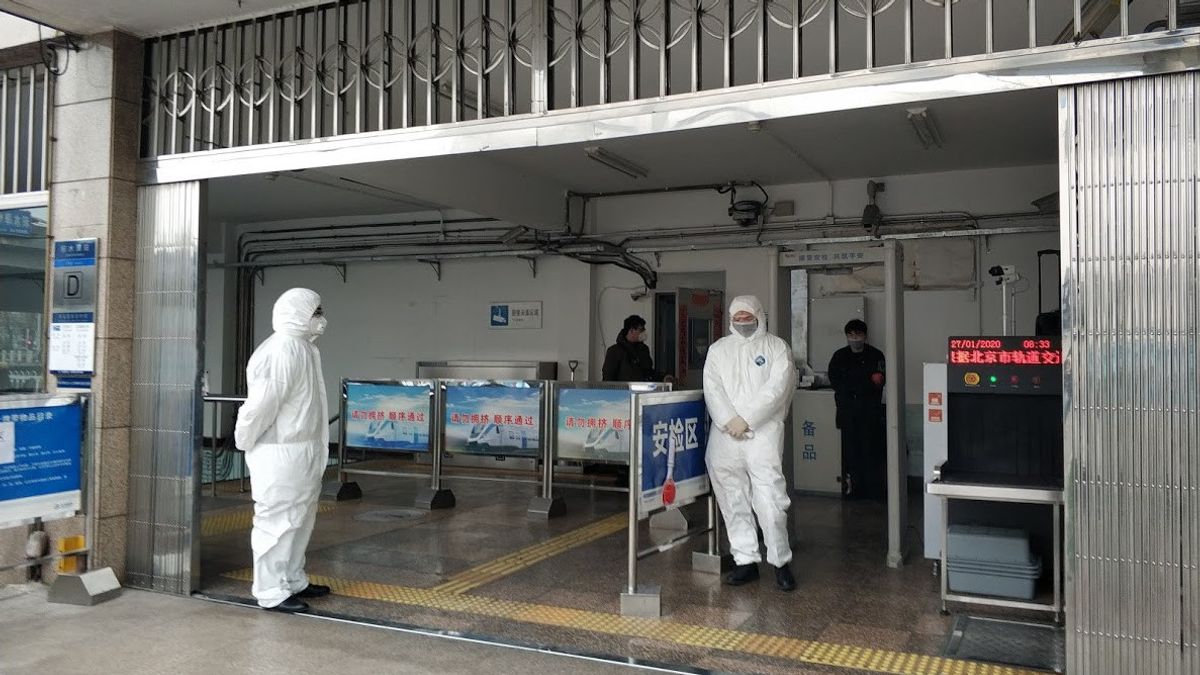JAKARTA - Chinese authorities softened their stance, including easing some of the coronavirus restrictions, after anger over restrictions that sparked protests in various regions of the country.
Several cities in the world's second-largest economy, although still reporting new infections, lifted district lockdowns and allowed businesses to reopen.
Health authorities announcing the easing of measures, made no mention of protests, which ranged from candles in Beijing to clashes with police on the Guangzhou streets on Tuesday and at the iPhone plant in Zhengzhou last week.
Demonstrations marked China's biggest civil disobedience show on the mainland since President Xi Jinping took office a decade ago, coming as the economy will enter a new era with growth much slower than seen in decades.
Although the number of cases is close to a record, Deputy Prime Minister Sun Chunlan, who oversees COVID efforts, said the virus's ability to cause disease was weakened, state media reported.
"The country is facing new situations and new tasks in epidemic prevention and control as pathogenicity of the Omicron virus weakens, more people are vaccinated and experiences in controlling the virus are growing," Sun said in comments reported in state media.
Sun also urged further "optimization" of testing, treatment and quarantine policies.
The mention of weakening pathogenicity contrasts with previous messages from authorities about the death of the virus.
Less than 24 hours after violent protests in Guangzhou, authorities in at least seven districts from a large manufacturing hub north of Hong Kong, said they had lifted a temporary lockdown.
One district said it would allow face-to-face classes in schools to resume, reopening restaurants and other businesses including cinemas. Several changes are being implemented.
Thousands of regions in eastern Beijing allow people infected with mild symptoms to be isolated at home, according to new rules issued by the environmental committee and seen by Reuters.
Neighbors on the same floor and three floors above and below the house with positive cases should also be quarantined at home, a committee member said.
That's far from the quarantine protocol at the start of the year when the entire area was locked, sometimes for weeks, even after just one positive case was found.
Other areas around held an online poll this week on the possibility of positive cases being isolated at home, residents said.
"I certainly welcome our residential environment's decision to carry out this vote despite the results," said resident Tom Simpson, China's managing director at the China-Britain Business Council.
He said the main concern was being forced into a quarantine facility, where "his condition could be very gloomy".
Meanwhile, prominent nationalist Commissioner Hu Xijin said in a social media post on Wednesday, many of Beijing's asymptomatic coronavirus carriers were already quarantined at home.
Separately, the southwest city of Chongqing will allow close contact with people with COVID, who meet certain requirements, to be quarantined at home. Meanwhile, Zhengzhou in China is announcing a "ordered" resumption of business, including supermarkets, gyms, and restaurants.
National health officials said this week authorities would respond to the "urgent concern" raised by the public that COVID rules should be applied more flexibly, in accordance with the conditions of an area.
China reported 36,061 COVID-19 infections on Wednesday, 4,150 of them symptomatic and 31,911 asymptomatic, the National Health Commission (NHC) said.
That was compared with 37,828 new cases for Tuesday, when 4,288 were symptomatic and 33,540 had no symptoms, which China calculated separately.
Excluding imported infections, China reported 35,800 new cases for Wednesday, of which 4,080 were symptomatic and 31,720 had no symptoms, down from 37,612 the previous day, according to recent NHC data, issued on Thursday.
Meanwhile, the absence of new deaths left the death toll at 5,233. As of Wednesday, mainland China has confirmed 323,686 cases of COVID-19 infection with symptoms.
The English, Chinese, Japanese, Arabic, and French versions are automatically generated by the AI. So there may still be inaccuracies in translating, please always see Indonesian as our main language. (system supported by DigitalSiber.id)









